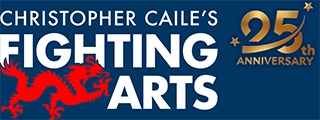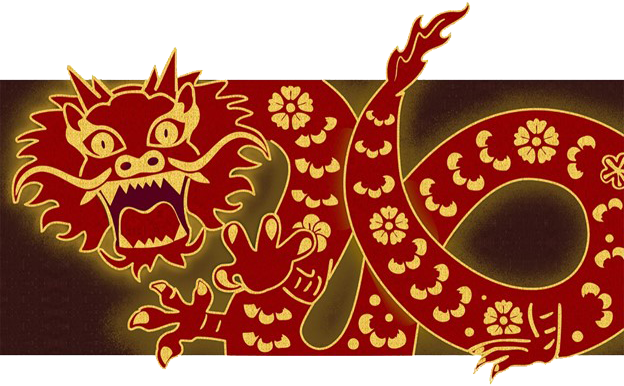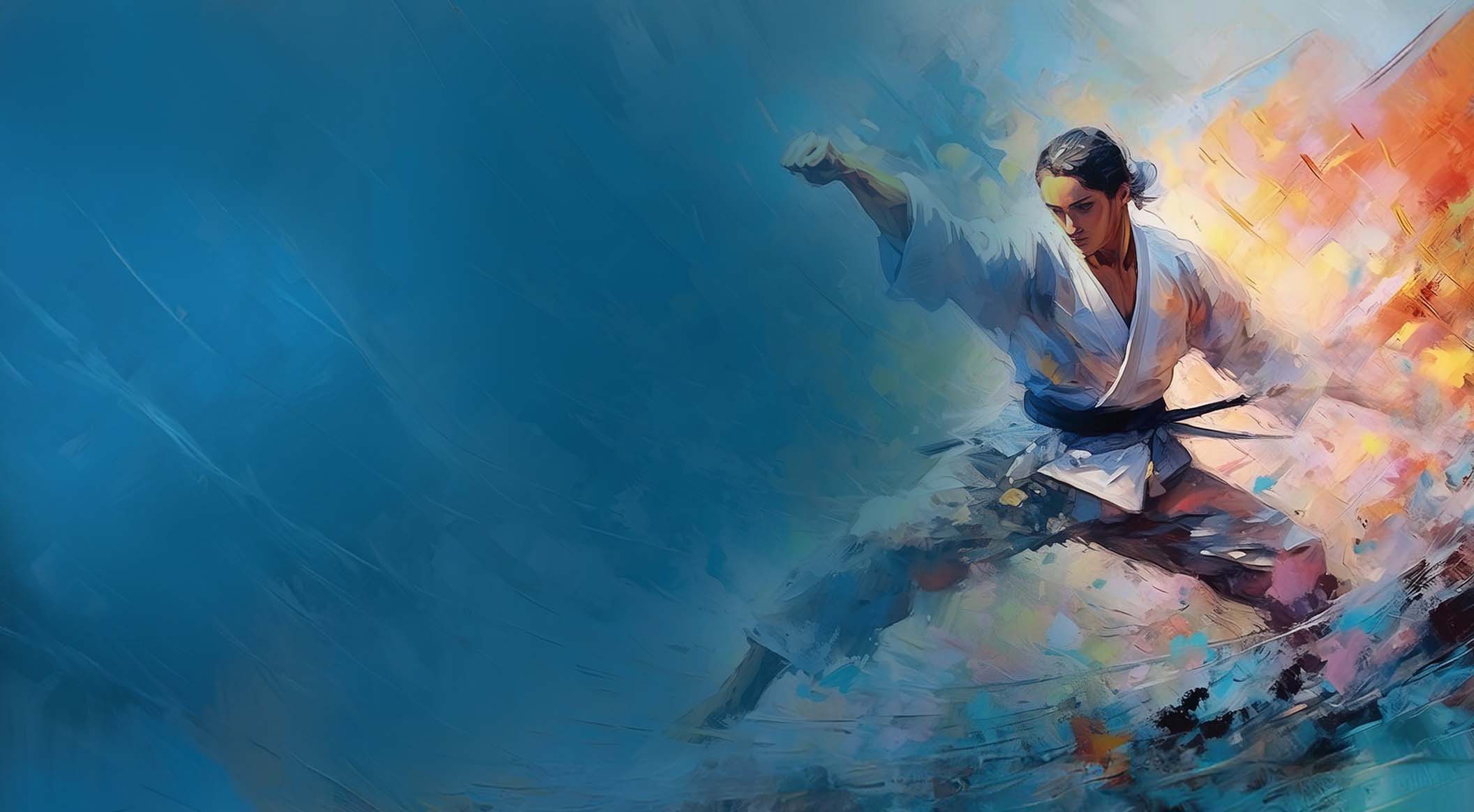For the Beginner:
Some Advice On Choosing A Martial Arts School
By Victor Smith and Christopher Caile
Thinking of studying a martial art? Well, the first big decisions are which art to choose and where to train, As you've probably noticed, there are many different arts to choose from. Finding the correct art for you to begin is very important. If their initial experience isn't good, students often find some other way in which to pass their time. Most people have one shot to enter the martial arts. If you've decided to begin training, you want to do everything you can to find the best school and martial art for you.
First, you want to look around the area where you live and see what schools are in that area. Look in the Yellow Pages (and your local newspapers) and see which schools are listed. Then, talk with friends and see who may have trained in the martial arts, or whose friends or children have trained in the martial arts. This survey should locate many of the schools in your area. They may include commercial schools with competitive pricing structures. However, don't forget clubs with club fees, or local instructors teaching from churches, schools, Y's or even from their homes. These programs often charge less since they have less overhead and may still provide a rewarding experience. On the other hand, small home schools and clubs do not support their teachers, and thus change of jobs or interest or other factors affecting the teacher may also affect the continued existence of the school or class schedule.
Now that you have some idea of local schools, do you have a specific art in mind? If you want to only train in aikido, judo or a specific style of karate, is there a school in your area? If not, are you willing to travel further to find a school in the style you want? Remember, training is an investment of your time, your body, your mind, your pocketbook, your friends and your family. To be successful you have to address all of these factors in your choice.
One of the most important things is to train in a school with the best available instructor or instructors, where "best" means the best human being you can find. Technical competence is important, but this is second to the human qualities of the instructor staff.
Talk to the instructor(s) in question, talk to their students, watch some classes and form an opinion about what you see. Did you like the training offered? Do you think you can do it? Don't be put off if it looks too technically advanced: everyone has to begin and learn at some time. Advanced practitioners should be able to do things you can't yet do.
Also, pay attention to your feelings. What do the students say about the school? Does the school project an overall feeling? Find a school where you feel comfortable with the instructor and the other students. Among questions you might want to consider are:
1. Does the school's philosophy match your own? For example, if you choose to study karate, are they teaching karate-do with the emphasis on self-development and spiritual growth, or does the school concentrate just on winning tournaments? Tournaments are fun, but there is a lot more in the martial arts to learn. If you like competition, then select a school that also teaches traditional philosophy.
2. There is also the question of how the school conducts its classes. Some schools are informal, without many rules or formal etiquette. Others are more formal and practice specialized etiquette. At first, the formal schools may feel a bit uncomfortable, but over time, you will find they teach values and help you condition your mind.
3. A related question involves the teacher and his or her style. We suggest looking for a traditional style that is part of a larger organization. Also, look for a teacher with credentials from a recognized organization. If the teacher is a 25 year old tenth degree black belt in his own self-created system, or has high ranks in several different martial arts, watch out. Even
obtaining a fifth degree black belt in a single art within a recognized traditional system takes decades of study.
4. Another sign to consider is the number of higher belts and senior students, which may indicate that the school has something that keeps students around. If the students are all beginners, that may say something too. In all likelihood, you will have to go back several times, to make sure you are getting the full picture of the school.
5. Does the school's training match your current physical abilities? If you choose karate and the school emphasizes hard freefighting even for beginners and you are a professional interested in getting some exercise, you might not wish to take the risk of getting banged up. That would be a clear sign that another type of school may be better for you. You might also select a non-competitive art like aikido, or a different type of competitive art like judo.
6. Look at the school class structure. Does it offer private instruction? Does it offer same belt classes? Does it offer mixed belt classes? Does it offer women's only classes? All of these choices appeal to different individuals, and taking the time to try to find a school which meets your own goals will help guarantee a successful choice.
There are also many personal questions to answer:
1. How much time can I spend training? Class time and its travel will take up time during your week. You have to budget that time for training if you are going to be a successful student. If you have less free time, you might have to choose a school closer to your home to meet your training needs.
2. How much money can you afford to spend on your training? With rare exceptions, most schools have attendant costs. There are monthly or program fees, plus other costs, such as joining the organization, getting your uniform, belts and promotions. There is a wide discrepancy between the different schools and styles. In some programs you must commit to a
Specified period of time and sign a contract for expenses over that time. Other schools may just require you to pay by the month. In any case you must be able to afford the costs of the program of your choice. It is important to realize that free instruction does not guarantee good instruction, nor does expensive instruction guarantee good instruction. The true worth of the training depends on the instructor, other class members and your own attitude and perception. But watch out if the school requires a significant or long-term financial commitment. A one-year contract is not uncommon but if your only option is a multiyear black belt program, you might consider other
options.
3. Do you have any physical problems that may deter your training? When beginning any physical program, it is a good idea to be checked out by your physician. This will make you feel good about your health, and provide a benchmark for future physicals, allowing you and your doctor to chart physical progress from your training.
4. Are you willing to make the commitment? You must be able to choose to train over other options, which may present themselves. If you cannot train on a regular basis, you will find your progress is very slow which may cause you to drop out. You must be sure you wish to commit yourself to this training. And, if you are starting to train to achieve specific goals, you must make an investment of time and effort to achieve them.
5. You must address the time training will require with your family and friends. They need to understand why you are choosing to spend time, which will take you away from them. By involving them in the process, you help avoid future difficulties with them.
Choosing a school and a martial art is not an easy endeavor, and it is important to make the right choice. A lot of students drop out because they made a choice that was not right for them. On the other hand, others find a school or organization to which they feel they truly belong and make their study a part of their lifestyle.
In every case, the choice to join a school and begin training in the martial arts is a personal one. Take the time to ask questions, look for yourself and think it through whether this is training you want to acquire.
Victor Smith
Victor Smith is a respected teacher of Isshinryu karate (6th degree black belt) and tai chi chuan with over 26 years of training in Japanese, Korean and Chinese martial arts. His training also includes aikido, kobudo, tae kwon do, tang so do moo duk kwan, goju ryu, uechi ryu, sutrisno shotokan, tjimande, goshin jutsu, shorin ryu honda katsu, sil lum (northern Shaolin), tai tong long (northern mantis), pai lum (white dragon), and ying jow pai (eagle claw). Over the last few years he has begun writing on, researching and documenting his studies and experiences. He is the founder of the martial arts website FunkyDragon.com/bushi and is Associate Editor of FightingArts.com. Professionally he is a business analyst, but also enjoys writing fiction for the Destroyer Universe.
About the Author Christopher Caile

Screenshot
Christopher Caile is the Founder and Editor-In-Chief of FightingArts.com. He has been a student of the martial arts for over 65 years.
He first started in judo while in college. Then he added karate as a student of Phil Koeppel in 1959 studying Kempo and Wado-Ryu karate. He later added Shotokan Karate where he was promoted to brown belt and taught beginner classes. In 1960 while living in Finland, Caile introduced karate to that country and placed fourth in that nation's first national judo tournament.
Wanting to further his karate studies, Caile then hitch hiked from Finland to Japan traveling through Scandinavia, Europe, North Africa, the Middle East and South and Southeast Asia — living on 25 cents a day and often sleeping outside.
Arriving in Japan (1962), Caile was introduced to Mas Oyama and his fledgling full contact Kyokushinkai Karate by Donn Draeger, the famous martial artist and historian. Donn also housed him with several other senior international judo practitioners. Donn became Caile's martial arts mentor, coaching him in judo and introducing him to Shinto Muso-ryu under Takaji Shimizu.
Caile studied at Oyama's honbu dojo and also at Kenji Kurosaki's second Tokyo Kyokushinkai dojo. In his first day in class Oyama asked Caile to teach English to his chief instructor, Tadashi Nakamura. They have been friends ever since. Caile also participated in Oyama's masterwork book, "This Is Karate."
Caile left Japan with his black belt and designation as Branch Chief, the first in the US to have had extensive training in Japan directly under Oyama Sensei. As such, Oyama Sensei asked him to be his representative on visits to his US dojos to report on their status.
A little over a year later, Nakamura, Kusosaki and Akio Fujihira won an epic David vs. Goliath challenge match against Thailand's professional Muay Thai Boxers in Bangkok, Thailand, thrusting Kyolushinkai and Nakamura into national prominence.
Back in the US Caile taught Kyokushinkai karate in Peoria, Il while in college and later in Washington, DC. while in graduate school. Durimg this time Shihan Nakamura had moved to New York City to head Kyokushinkai's North American Operation.
In 1976 when Kaicho Tadashi Nakamura formed the World Seido Karate organization, Caile followed. Living then in Buffalo, NY, Caile taught Seido karate and self-defense at the State University of New York at Buffalo (SUNY Buffalo) for over 15 years where he also frequently lectured on martial arts and Zen in courses on Japanese culture.
Caile moved to New York City in 1999 to marry Jackie Veit. He is now an 8th degree black belt, Hanshi, training in Seido Karate's Westchester, NY Johshin Honzan (Spiritual Center) dojo. In Seido Caile is known for his teaching of and seminars on kata applications. He also produced a 14 segment video series on Pinan kata Bunkai currently available to Seido members.
Caile is also a long-time student and Shihan in Aikido. He studied in Buffalo, under Mike Hawley Shihan, and then under Wadokai Aikido's founder, the late Roy Suenaka (uchi deshi under Morihei Ueshiba, founder of Aikido and was Shihan under Tohei Sensei). In karate, Suenaka (8thdan) was also an in-house student of the Okinawan karate master Hohan Soken.
Having moved to New York City, Caile in 2000 founded this martial arts educational website, FightingArts.com. Twenty-five years later, in 2025, it underwent a major update and revision.
For FightingArts.com and other publications Caile wrote hundreds of articles on karate, martial arts, Japanese art, Chinese Medicine and edited a book on Zen. He also developed relationships with a cross section of leading martial arts teachers. Over the last four decades he has conducted extensive private research into karate and martial arts including private translations of the once secret Okinawan hand copied and passed on Kung Fu book, the Bubishi, as well as an early karate book by the karate master Kenwa Mabuni. He periodically returns to Japan and Okinawa to continue his studies and participate Seido karate events. In Tokyo he practiced (with Roy Suenaka Sensei) in a variety of aikido organizations with their founders – including private interviews and practices at the Aiki-kai Aikido Honbu dojo with the son and grandson of aikido's founder, Doshu (headmaster) Kisshomaru (an old uchi-deshi friend) and his son, Moriteru Ueshiba and in Iwama with Morihiro Saito. On Okinawa he studied Goju Ryu karate under Eiichi Miyazato, 10th dan founder of Naha's Jundokan, and also with Yoshitaka Taira (who later formed his own organization, who specialized in kata Bunkai. While there Caile also trained with Hohan Soken's senior student, Master Fusei Kise, 10 dan as well as with the grandson of the legendary karate master Anko Itosu.
Caile's other martial arts experience includes: Diato-ryu Aikijujitsu and Kenjitsu, kobudo, boxing, Muay Thai, MMA, Kali (empty hand, knife and bolo), study of old Okinawan Shoran-ryu & Tomari body mechanics, study of old Okinawan kata under Richard Kim, study of close quarter defense and combat, including knife and gun defenses, Kyusho Jitsu and several Chinese fighting arts including 8 Star Praying Mantis, Pak Mei (White Eyebrow), and a private family system of Kung Fu.
Caile is also a student of Zen as well as a long-term student of one branch of Traditional Chinese Medicine, Chi Kung (Qigong). As one of two senior disciples of Chi Kung master Dr. Shen (M.D., Ph.D.) Caile was certified to teach and practice. This led to Caile's founding of the The Chi Kung Healing Institute on Grand Island, NY. In Western NY, he also frequently held Chi Kung seminars, including at SUNY Buffalo and at the famous Chautauqua Institution in Chautauqua, NY. His articles on Chi Kung also appeared in the Holistic Health Journal and in several books on alternative medicine.
Caile holds a BA in International Studies from Bradley University and MA in International Relations with a specialty in South and Southeast Asia from American University in Washington, D.C. While in Buffalo, NY he also studied digital and analog electronics.
In his professional life Caile also worked in public relations and as a newspaper reporter and photographer. Earlier he worked in the field of telecommunications including Managing a Buffalo, NY sales and service branch for ITT. He then founded his own private telephone company. This was followed by creation of an electrical engineering company that designed and patented his concept for a new type of low-cost small business telephone system (which was eventually sold to Bell South). The company also did contract work for Kodak and the US space program. Simultaneously Caile designed and manufactured a unique break-apart portable pontoon boat.
Most recently Caile co-founded an internet software company. Its products include software suites with AI capability for control and management of streaming media, such as video and music, an all-in-one book publishing software product for hardcover, eBook and audio book creation and security software for buildings and government use.
For more details about Christopher Caile's martial arts, work experience and life profile, see the About section in the footer of this site.
Search for more articles by this author:






